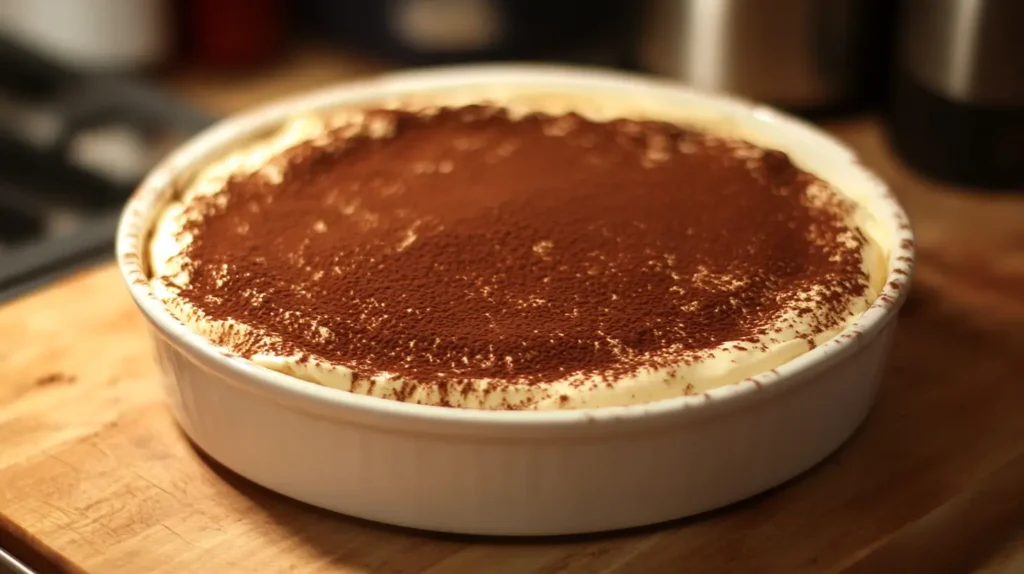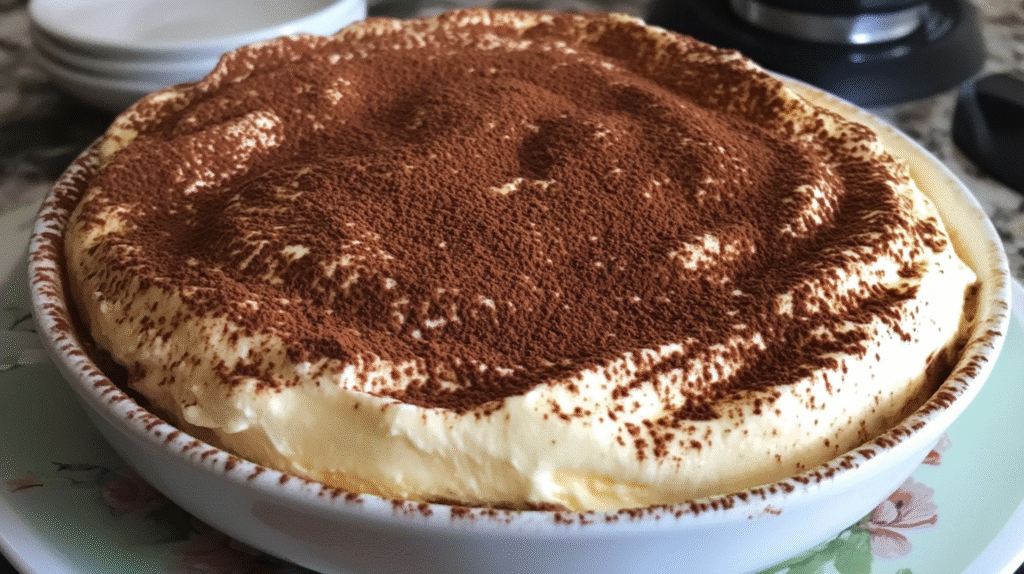Tiramisu is more than a dessert—it’s a beloved Italian tradition that has traveled the globe, charming food lovers with its indulgent texture and bold flavors. Translating loosely to “pick me up,” tiramisu lives up to its name by blending coffee, creamy mascarpone, and a light dusting of cocoa into a rich, no-bake masterpiece.
Whether you’re making it for a holiday, a dinner party, or a quiet weekend treat, mastering the classic Italian tiramisu is a skill worth having in your culinary toolkit.
Table of Contents
A Brief History: Where Did Tiramisu Come From?
Tiramisu may feel like a centuries-old dish, but it actually gained popularity in Italy in the 1960s or 1970s. Most culinary historians trace its roots to the Veneto region, specifically the town of Treviso. It’s believed to have been created by a local restaurant, combining simple pantry staples—eggs, coffee, and cheese—into something magical.
Unlike many traditional desserts tied to aristocracy or ancient customs, tiramisu was born in everyday kitchens. Its accessibility and elegance made it a fast favorite not only across Italy but worldwide.
What Defines the Classic Italian Tiramisu Recipe?
Though there are countless variations today, the authentic tiramisu recipe stays true to a few key components:
- Egg yolks and sugar whipped into a zabaglione-style base
- High-quality mascarpone cheese
- Savoiardi (ladyfingers) dipped in espresso
- A dusting of unsweetened cocoa powder
- No baking required
What sets the classic version apart is its simplicity. No whipped cream fillers or overly sweet flavors—just a perfect harmony of creamy, bitter, and lightly sweet layers.
Italian Tiramisu Ingredients (With Measurements)
To serve around 6–8 people, here’s what you’ll need:
- 6 large egg yolks
- ¾ cup (150g) granulated sugar
- 16 oz (450g) mascarpone cheese, room temperature
- 1½ cups (360ml) espresso or strong coffee, cooled
- 7 oz (200g) savoiardi (ladyfingers)
- Unsweetened cocoa powder, for finishing
Pro tip: If you’re concerned about raw eggs, use pasteurized eggs or gently cook the yolks with sugar until thick and safe to consume (around 160°F / 71°C).
How to Make Classic Italian Tiramisu – Step by Step
1: Prepare the Cream Base
Using a handheld mixer or whisk, beat the egg yolks and sugar together in a bowl set over a saucepan of simmering water. Whisk continuously for 5–7 minutes until the mixture becomes pale, thick, and slightly warm to the touch. Remove from the heat and let it cool slightly.
Once cooled, gently fold in the mascarpone. Mix until smooth and creamy, with no lumps remaining.
2: Make the Coffee Soak
Pour your espresso or strong coffee into a wide bowl or shallow dish. Add in the rum or Marsala, if using. Avoid sweetening the coffee—its bitterness is key to balancing the dessert.
3: Dip the Ladyfingers
Quickly dip each ladyfinger into the coffee mixture for just 1–2 seconds per side. Over-soaking will cause the cookies to disintegrate.
4: Assemble the Layers
In a medium baking dish (about 9×9 inches or similar), start with a layer of soaked ladyfingers.
Spread half of the mascarpone cream over the cookies, smoothing it with a spatula.
Repeat with another layer of dipped ladyfingers, followed by the remaining cream.
5: Chill to Perfection
Cover the dish with plastic wrap and refrigerate for at least 6 hours—overnight is ideal. The flavors meld, and the cream sets into a firm, sliceable consistency.
6: Add the Final Touch
Right before serving, sift a generous layer of unsweetened cocoa powder over the top. You can also garnish with dark chocolate curls, coffee beans, or a light dusting of grated chocolate.

Creative Tiramisu Variations
Looking to mix things up? Here are some popular spins on the classic:
- Vegan Tiramisu: Use plant-based mascarpone, egg replacers, and vegan ladyfingers.
- Berry Tiramisu: Add a layer of fresh raspberries or strawberries between the cream layers.
- Chocolate Tiramisu: Stir melted dark chocolate into the mascarpone for a richer flavor.
- Gluten-Free Version: Swap savoiardi with gluten-free alternatives or homemade sponge cake.
Common Tiramisu Mistakes to Avoid
Even a simple recipe can go wrong without a few precautions. Watch out for:
- Over-soaking ladyfingers: They’ll turn soggy and ruin the texture.
- Runny cream: Let your yolk mixture cool before adding mascarpone, and don’t overmix.
- Skipping the chill time: Tiramisu needs time to firm up—don’t rush it.
- Using weak coffee: Go bold with espresso or dark roast for full flavor.
How to Serve and Store Italian Tiramisu
Serving Ideas:
- Present it in a glass dish for a rustic look.
- Serve in individual cups or jars for an elegant, modern twist.
- Garnish with cocoa powder, chocolate curls, or a sprinkle of instant espresso powder.
Storage:
- Refrigerate in an airtight container for up to 4 days.
- Freezing? Yes—but note the texture might change slightly. Freeze up to 2 months, then thaw overnight in the fridge before serving.
Frequently Asked Questions About Italian Tiramisu
What does tiramisu mean?
It means “pick me up” in Italian—thanks to its coffee content and feel-good indulgence.
Is raw egg safe in tiramisu?
Yes, if you’re using pasteurized eggs or cooking the yolks to a safe temperature. Alternatively, opt for eggless recipes.
Can tiramisu be made a day in advance?
Absolutely—it’s even better the next day once the flavors settle.
Can I use something else instead of mascarpone?
You can use cream cheese blended with heavy cream, but it won’t be quite as authentic or smooth.
Why is my tiramisu too soft or watery?
This often happens when ladyfingers are over-soaked or the cream wasn’t set properly before chilling.

Conclusion
Classic Italian tiramisu proves that you don’t need a long list of ingredients or complicated techniques to create something extraordinary. With bold espresso, creamy mascarpone, and just the right touch of sweetness, this no-bake dessert is a must-have in every home cook’s repertoire. Stick to the basics, use the best ingredients you can find, and let the chill time do the magic.
Your guests will think you’ve brought home a slice of Italy—and you just might agree.
For another light and delicious dessert, try this Banana Split Fluff Delight—a fruity, creamy delight.
